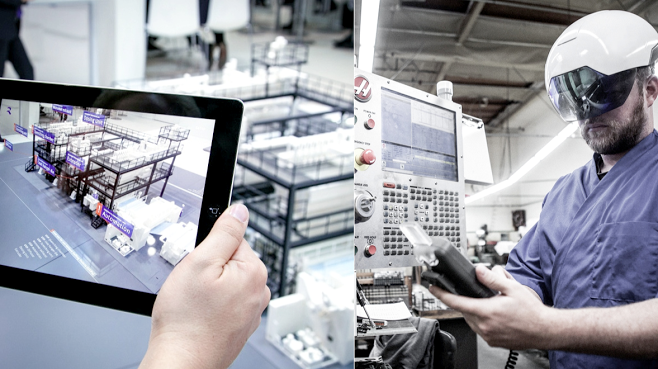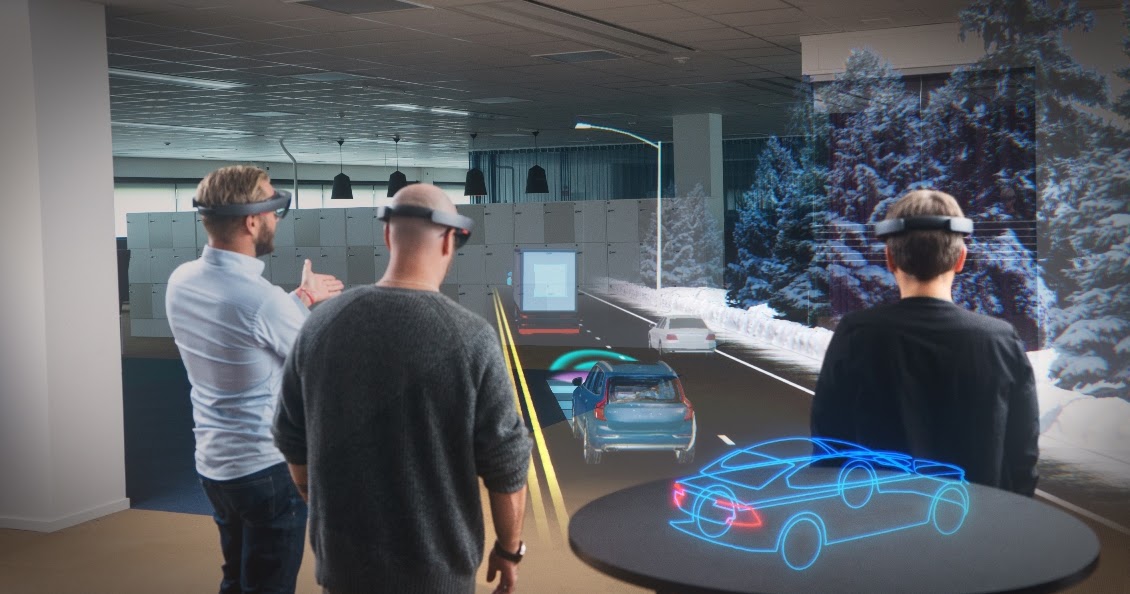Augmented reality (AR) is a game-changing technology that overlays digital information onto the real world. Unlike virtual reality, which creates a completely immersive experience in a simulated environment, AR enhances our perception of reality by adding virtual elements to our surroundings.
AR glasses or smartphone apps can bring holographic images and virtual objects into our physical space. This blending of the physical and digital realms has limitless potential for industries like entertainment, education, healthcare, and manufacturing.
Using advanced technologies like computer vision and sensors, AR precisely maps the physical environment and superimposes digital content onto it. This opens up interactive experiences and transforms how we engage with reality.
In entertainment, AR enables immersive gaming experiences and real-time visual effects in movies. In education, it brings textbooks to life with interactive visualizations. In healthcare, surgeons can visualize patient data during procedures, while workers in manufacturing benefit from real-time instructions overlaid on their workspace.
Augmented reality is revolutionizing how we perceive and interact with the world. By seamlessly integrating virtual elements into our surroundings, AR offers endless possibilities for innovation across various industries.
Historical Background and Evolution of Augmented Reality Technology
The concept of augmented reality can be traced back to Ivan Sutherland’s “Sword of Damocles” in 1968, which laid the foundation for computer-generated overlays on a user’s view. However, significant advancements were made in the late 20th century.
In 1999, Hirokazu Kato created ARToolKit, revolutionizing AR application development. This open-source software library allowed developers to easily create AR experiences. In 2009, the app “Layar” brought AR to mainstream audiences through smartphone cameras.
Since then, augmented reality has experienced exponential growth thanks to advancements in hardware and increased accessibility. Companies have recognized its potential across multiple sectors and invested heavily in research and development. Today, AR is used in gaming, education, healthcare, architecture, and marketing.
Augmented reality continues to evolve with improved graphics and interactivity. As technology advances further, we can expect even more exciting applications for AR in the future.
Overview of the Augmented Reality Industry
The augmented reality (AR) industry has experienced remarkable growth in recent years, driven by innovation and increasing demand for immersive experiences. By 2025, the global AR market is projected to reach $198 billion.
Companies like Apple, Google, and dedicated AR startups are playing a pivotal role in shaping the future of technology through cutting-edge developments and user-friendly applications. AR technology has transformative potential across sectors such as gaming, education, healthcare, retail, and manufacturing.
It allows for enhanced customer experiences, interactive learning materials, improved medical diagnoses and surgical precision, virtual try-ons for retail customers, and more. With advancements in hardware capabilities and smartphone integration, AR is becoming increasingly accessible to consumers and businesses alike.
The future of augmented reality holds exciting possibilities for further integration in our daily lives.
Importance and Potential of Investing in Augmented Reality Companies
Investing in augmented reality (AR) companies offers significant potential for financial growth and diversification. As AR gains traction across industries, companies at the forefront of this technology are positioned for substantial revenue growth.
AR has the power to revolutionize how we interact with technology, enhancing productivity, improving user experiences, and unlocking new possibilities in sectors like gaming, entertainment, healthcare, education, and e-commerce.
Investing in AR companies allows individuals to be part of a technological revolution that is reshaping our world and holds great promise for financial success.
Top 5 Leading Augmented Reality Companies
| Company Name | Industry Focus |
|---|---|
| Magic Leap | Gaming, Entertainment |
| Microsoft | Technology, Enterprise |
| Apple | Mobile Devices, Consumer |
| Qualcomm | Semiconductor, Technology |
| Internet, Technology |
Please note that this table represents a simplified list of leading augmented reality companies and there are many other notable players in the market.
Company A: Innovations and Impact on the Market
Company A is a leader in augmented reality (AR), offering an immersive AR headset that overlays digital content onto the user’s field of view. Their software development kit (SDK) enables developers to create customized AR applications.
The impact of their products spans multiple industries, revolutionizing gaming experiences and providing realistic surgical training simulations in healthcare. Through strategic partnerships with major tech companies, Company A has solidified its position as a key player in the AR market.
Their innovations continue to shape the future of augmented reality.
Company B: Market Dominance and Expansion Strategies
Company B has firmly established its position as the dominant force in the augmented reality market. Its widespread adoption of AR devices and platforms has propelled it to the forefront, leaving its competitors struggling to keep up.
The seamless integration of Company B’s products with existing technology ecosystems has proven to be a major selling point, attracting a significant user base across various industries such as e-commerce, advertising, and real estate.
One of the key factors contributing to Company B’s success is its unwavering commitment to user experience and accessibility. By prioritizing these aspects, Company B ensures that its AR solutions are not only cutting-edge but also easy for customers to use and understand.
This customer-centric approach has allowed them to penetrate multiple markets effectively.
To maintain their market dominance, Company B has implemented aggressive expansion strategies. They have forged strategic partnerships with other tech giants, leveraging their expertise in hardware manufacturing and software development.
These collaborations enable Company B to enhance their products by incorporating the latest technological advancements.
Furthermore, Company B has shown a keen eye for identifying potential opportunities through strategic acquisitions. By acquiring startups specializing in AR-related technologies, they are able to expand their product offerings and stay ahead of emerging trends in the industry.
In summary, Company B’s market dominance can be attributed to its widely popular AR devices and platforms that seamlessly integrate with existing technology ecosystems. Their strong focus on user experience and accessibility sets them apart from competitors in various industries.
Through strategic partnerships and acquisitions, Company B continues to strengthen its position while expanding its reach into new markets.
Company C: Technological Advancements and Research Development
Company C is a pioneer in augmented reality (AR) technology, consistently pushing the boundaries of what is possible in this field. Their innovative solutions include gesture recognition for intuitive interactions and advanced tracking systems for precise object placement.
By investing heavily in research initiatives and collaborating with academic institutions and industry experts, Company C continues to shape the future of AR technology. They strive to improve visual fidelity, reduce latency, and enhance user comfort, ensuring that their advancements remain at the forefront of this rapidly evolving industry.
Company D: User-Friendly Applications for Everyday Life
Company D specializes in developing user-friendly augmented reality (AR) applications that seamlessly integrate into everyday life. Their navigation app overlays directions onto real-world environments, making it easier to navigate unfamiliar places.
Additionally, their interior design app allows users to visualize furniture placement, ensuring a perfect fit before making a purchase. These practical solutions have tremendous growth potential across industries such as retail, tourism, and education.
By bridging the gap between the digital and physical worlds, Company D offers enhanced experiences for consumers and increased efficiency for businesses. With the growing demand for immersive experiences, they are well-positioned to capitalize on these opportunities.
[lyte id=’z-T7-3VXxbg’]







